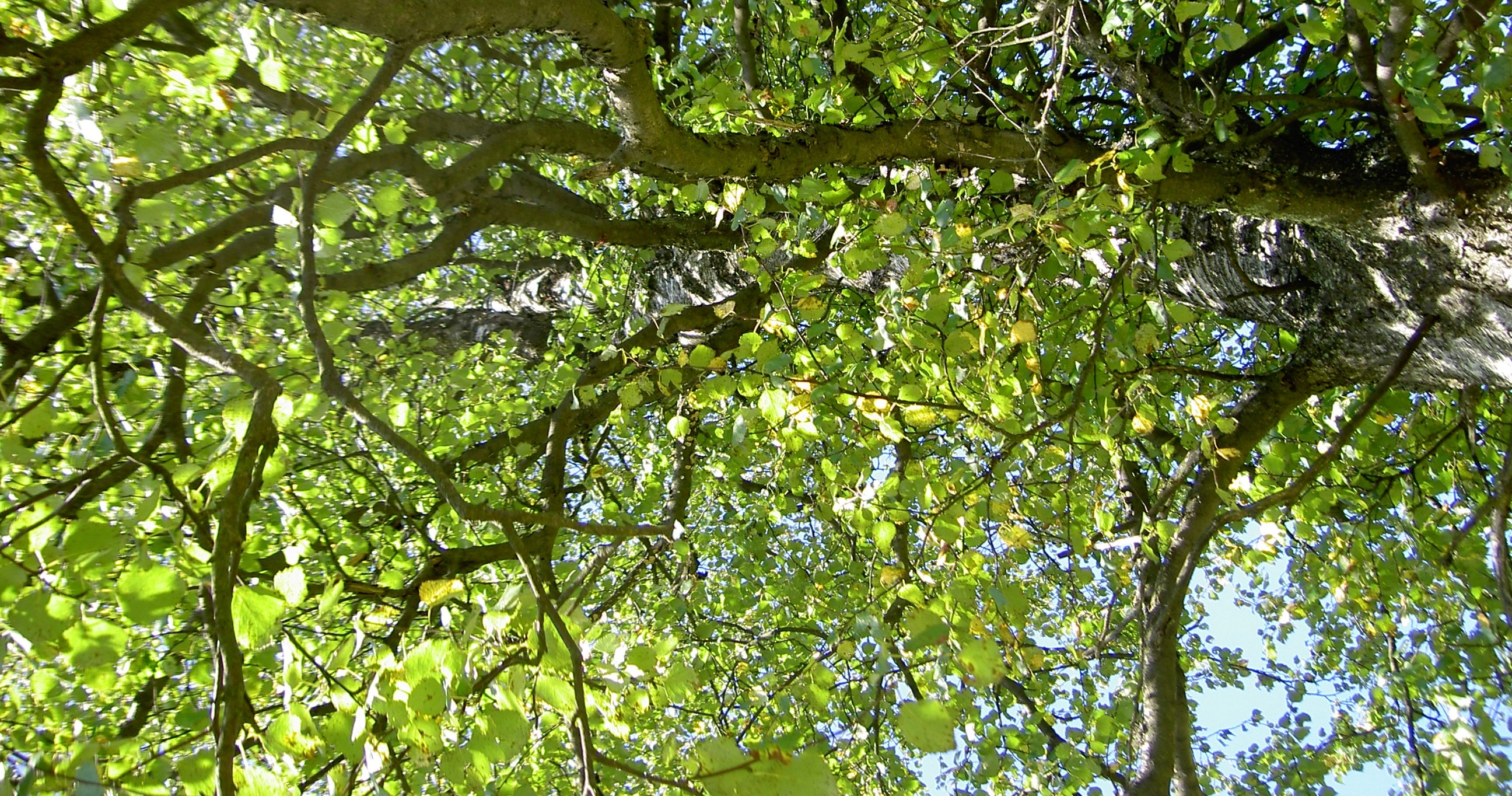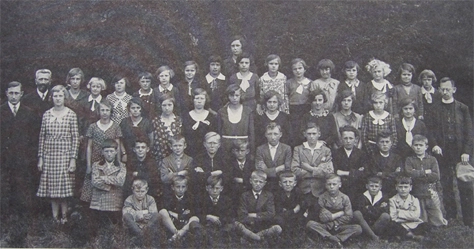
Holiday and youth time
Holiday and youth time in our Neuhaus


These school photos were taken in 1934
Like all children, we looked forward to the big summer holidays. They were from 1 July to 1 September. For once you didn't have to go to school! They were not just for lazing around, you had to do something.
Early July was the time for making hay. The mown grass had to be spread out neatly and turned over several times with the rake. In the evenings, it was justified in "swathes" and piled up into "Schöberle" so that it did not get so damp at night or even when the rain came. Around the "Schöberle" we often played our "Fangeles" and "Schöberlehüpfen" and many a heap of grass fell together again. The next morning, the heaps were scattered again, turned over several times and, if the sun cooperated, made into swathes again and stacked as dry hay on the hay racks by the adults, tied down and carried into the hayloft.
After the haymaking came the berry season. So they went with cans and buckets up to the Bergwal, to the Hirschkopf, to the Brenntenberg, to the Steinle, to the Trinkensaifenerwald and everywhere where there were ripe blueberries. With a piece of bread in our pockets, we found water to drink in the forest springs. On the way home, we children often sang to draw attention to ourselves: "Rolle rolle voll, mein Topf is voll, mein Bauch ist leer, mich hungerts sehr". But if we hadn't found much and had eaten so many berries that our mouths and noses were already blue, then we would say: "Roll roll roll, my belly is full, my pot is empty, I'm never hungry again".
Later, when all the berries were ripe, one could use the "berry comb", which was quicker and spared the laborious plucking. In the evening, the berries had to be picked by rolling them down on an inclined pan on the knees and picking out the leaves and the unripe ones, the "pampers". The berries were then carried to the merchant's wife, the "Burschta", who bought them for the berry merchants. With her wooden five-litre and one-litre jar, she measured the berries and made sure that there were no leaves. At home we had "blackberry porridge" with pan-fried dumplings, a delicacy! Blackberry cake was baked. Some of the berries were preserved in large jars for the winter and sealed airtight at the top with heated beef fat.
Then came the time of the cranberries. They were better paid. Pickled, they were a good remedy for an upset stomach.
In between we had to look for wood. We boys went up to the lumberjacks in the deer head forest with our wooden knapsacks on our humps and a hand axe, where we chopped the strong branches of the felled trees into suitable lengths and dragged them home with our knapsacks. They had a high calorific value and really crackled in the stove in winter, because we needed a warm room for our home work. Many a humped basket full of spruce cones, bark and brushwood was brought home at that time.
In August there were the most mushrooms in the forest. There were boletus, birch mushrooms, flour and butter mushrooms, red and yellow deubelings, sheep mushrooms, egg sponges and many more. With the sleeping mushrooms you had to be careful not to confuse them with the poisonous champion. Most mushrooms grew after a warm rain. So one roamed the forest and came home with soaked shoes and garments. Many had their own "mushroom places", which were not revealed. The mother looked through the mushrooms again to make sure there were no wrong ones. They were cut into slices and put in a pan to dry in the sun, turned several times until they were really "pale". They were then hung in a "mushroom bag" over the cooker, a welcome addition to the winter menu. Mushrooms that were not suitable for drying were immediately fried in a large pan. The whole house smelled of them, so that one's mouth watered, as they say.
We children played in the Rohlaubach, which still had clear water, and went trout fishing there, which was actually forbidden. With our trousers rolled up, we trudged around trying to catch one among the stones until the forest herder often came and chased us away. Down in the forest we dammed the stream with stones so we could bathe in it. In the "Haad" part of the forest, we boys played "Pascher" and "Schandarm" and rushed through the spruces so that the sticks flew around our ears. We had built our playhouses under the dense trees and swung in the treetops above. We peeped into many a bird's nest, we cleaned out wasps' nests and came home in the evening all stung. We climbed around on the rocks. It was a nice feeling, here was our home, here we were at home. At the time of the hay harvest, the same work was repeated as with the haymaking.
In September, school started again. On the now harvested meadows we could fly our kites, which we had made at school, each in our own way.
Afterwards, we had to help with the potato harvest. It was often very cold and we picked the potatoes with clammy fingers. From the scrawny potato haulm, we children made our "Erdäpfelfeurerle" and roasted the small potatoes in the hot ashes. At the beginning of November, the first snow came and covered the woods and fields with its white blanket. The "Klöppelsack" (lace bag) had to be prepared again, which we used to take turns with after school in the evenings in another parent's house, and we looked forward again to our skiing and sledging trips in winter.
So we children grew up in our mountain home, modest, hard-working and connected with nature. It was a wonderful youth. Unfortunately, many of those who were with us at that time later lost their young lives in the war, and their names are not to be found on any war memorial.
Ernst Ullmann